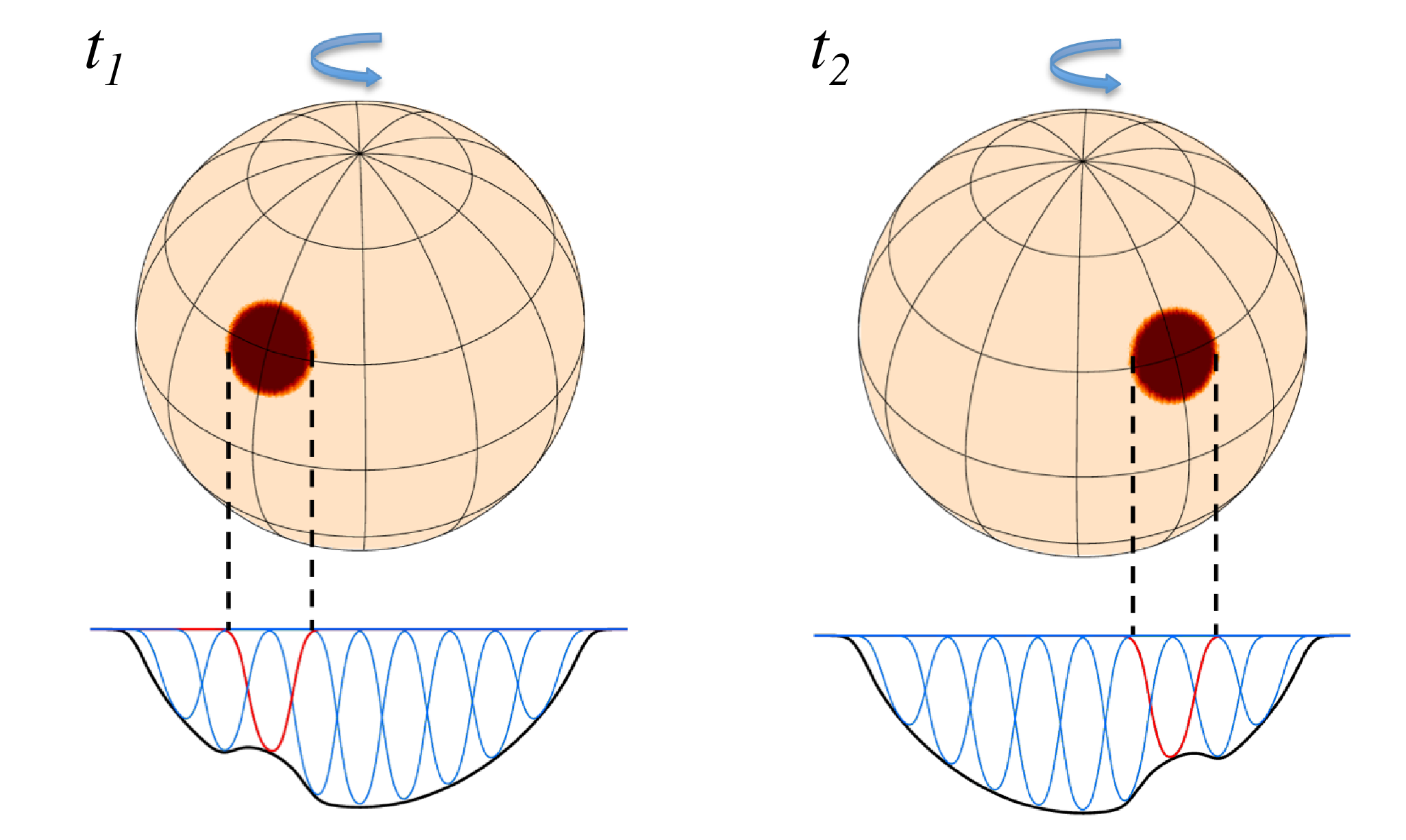
Menu:
Doppler and Zeeman Doppler Imaging of stellar surfaces
Doppler Imaging (DI) is a powerful remote sensing method capable of detecting inhomogeneities (spots) on the surfaces of distant stars and reconstructing detailed maps of these star spots. It is currently the highest resolution indirect imaging technique available in astrophysics. DI uses high-resolution observations of line profile variations, inverting these data into a two-dimensional stellar surface map. From mathematical standpoint, DI solves an ill-posed tomography problem with the help of a regularisation. This is similar to other applications of tomographic imaging in science and technology.
The plot below illustrates basic principle of DI. Due to Doppler effect arising from the stellar rotation, spectral contributions of different surface zones are shifted in wavelength. Any significant surface structure produces a perturbation, which shows up as a distortion (a bump or a dip) in the disk-integrated stellar spectral line profile. This distrotion moves across line profile as the star rotates. Instanteneous longitude of a star spot can be determined from the position of the distortion within the spectral line. Latitude can be inferred from the amplitude and speed of the motion of the distortion across line profiles.

Magnetic or Zeeman Doppler Imaging (ZDI) extends the idea of tomographic mapping to the reconstruction of vector magnetic fields on stellar surfaces. ZDI makes use of high-resolution time-series spectropolarimetric observations (Stokes parameter spectra). This inversion technique draws information from both Doppler resolution of stellar surface and rotational modulation of polarimetric signatures. It is thus not limited to rapid rotators and can be efficiently applied to study global magnetic fields of stars similar to the Sun.
In this review you can find more details on the principles of DI and ZDI and a brief summary of the scientific results obtained with these powerful techniques. An in-depth discussion of applications of stellar surface tomography tools to specific astrophysical problems can be found in my research papers. DI and ZDI codes used in my research are listed here.
Following the links below you can find illustrations of typical line profile variations produced by different types of stellar surface structures.